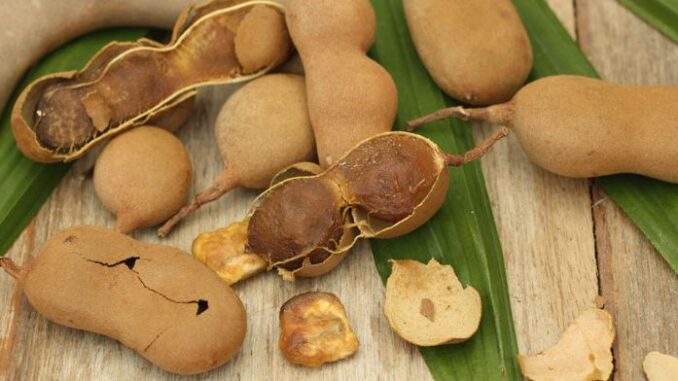
By Carlos Ramírez and Vanessa Sam
Tamarind holds a distinct place in Mexican food.
The taste of tamarind sweets is part of Mexican children’s collective memory. These candies transported them to a time when life was just fun and games.
In Mexico, refreshing drinks and craft beer sometimes have a tamarind base. Tamarind pulp also holds a key place in Mexican gastronomy. It is the main ingredient in a variety of sauces.
But what children and adults enjoy the most are sweets, such as sugary pulp balls, apples covered with tamarind, spoons full of tamarind pulp, and the traditional pocket-size pots full of tamarind.
The fruit is common in Mexico, but not indigenous to it. Tamarind comes from Asia and Africa. The Spaniards brought it during colonial times, and now it grows in Guerrero, Oaxaca, Michoacán and Chiapas.
Tamarind “has a long tradition. In my childhood, during the 1970s, children used to eat tamarind sweets. Some came in a little clay pot. Girls who played with dolls used the miniature pots as accessories,” said Rosalinda Aguilar Gallardo, a Mexican housewife.
“After enjoying a tamarind pot, your mouth might be on fire, but the pots were so tasty that you kept eating.”

Tamarind pots underscore the relevance of clay pots in Mexican cuisine.
Potters throughout Mexico make them with reddish clay. They shape the clay with a lathe and then burn the pots. Sometimes, they are decorated, but many pots are simple. They were once the main cooking ware in Mexico.
Now, manufacturers place this candy in little plastic pots, emulating the traditional clay pieces. They usually cover the pulp with cellophane or plastic held by a rubber band, which doubles as the napkin people used to cover their clay pots.
“The miniature tamarind pots were modernized. Now, they come in transparent plastic containers, and there is a brand that makes plastic pots. It is more than anything, nostalgic. Times change, and the brand just adapted. The tiny pots cost between 10 and 15 pesos (about 50 cents) in grocery stores. Their flavor has changed as well, but I will keep eating them because they remind me of my childhood,” said Aguilar Gallardo.
To prepare homemade tamarind pots, wash and peel the tamarind. Then, place it in a pot with water and bring to a boil over low heat. Once the pulp has cooled, remove the seeds. In a separate container, mix some water with sugar and chili powder. Then, add the pulp to this mix and cook it again on low heat until the ingredients are fully mixed.
Finally, when the pulp cools down, fill the little pot to the top and cover it with a lid or a piece of cellophane held with rubber bands or ribbons.
Besides being delicious, tamarinds are nutritious. They provide carbohydrates and vegetable protein. They are rich in soluble fiber, magnesium, calcium, potassium, iron, sulfur, phosphorus, organic acids, and vitamins A, B3, and C. Seniors use them as a laxative. Tamarinds provide energy, lower fever and fight gingivitis, coughs and digestive problems.
Translated and edited by Gabriela Olmos. Edited by Fern Siegel.
The post Pocket-Size Tamarind Pots Offer A Bittersweet Taste Of Nostalgia appeared first on Zenger News.
Recommended For You.



Be the first to comment